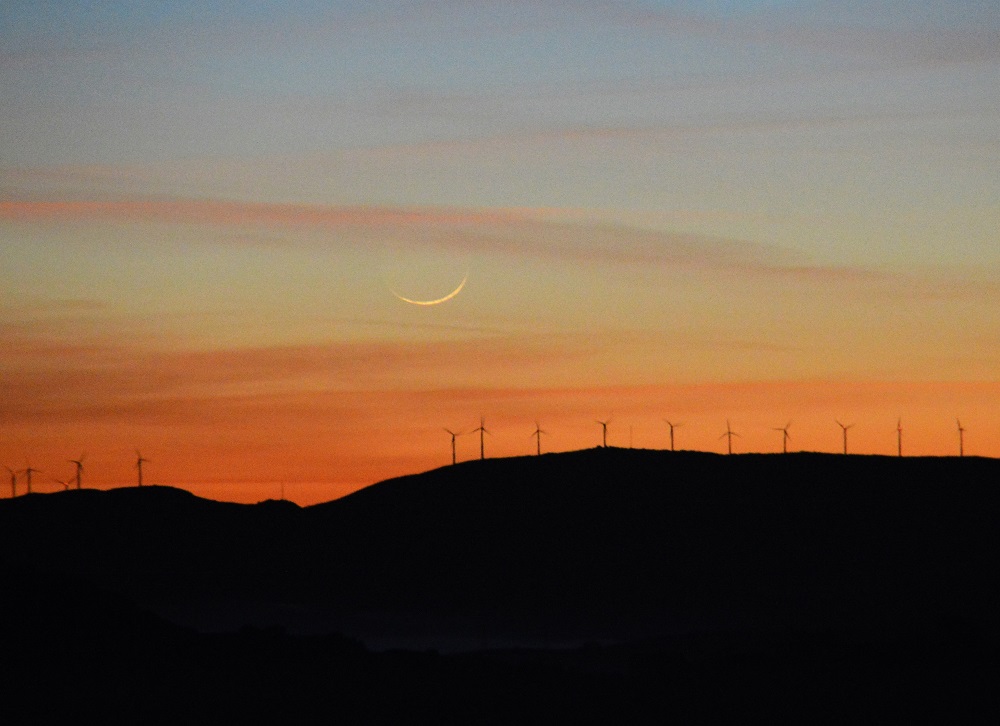Are you hanging out at home this week, and looking to observe some naked eye planets? As we mentioned last week, while Venus is shining bright in the dusk sky, all of the other four naked eye planets of Mars, Saturn, Jupiter and Mercury are skulking in the early dawn.
Now for the good news: this week, the thinning crescent Moon visits the grouping of planets, in a thrilling set of dawn conjunctions centered on the morning of Wednesday March 18th. Another plus: the shift one hour ahead to Daylight Saving Time on March 8th for most of North America means that extra lost hour of evening darkness has moved to the morning.
Europe and the United Kingdom follow suit with the shift to Daylight Saving Time on the last Sunday of the month on March 29th.
It’s a spectacular gathering of planets worth setting your alarm clock for, with Mars, Jupiter and the crescent Moon all within a two degree circle on the morning of March 18th.
Follow that Moon, as it glides across the southern swath of the ecliptic that the Sun just vacated this past winter.
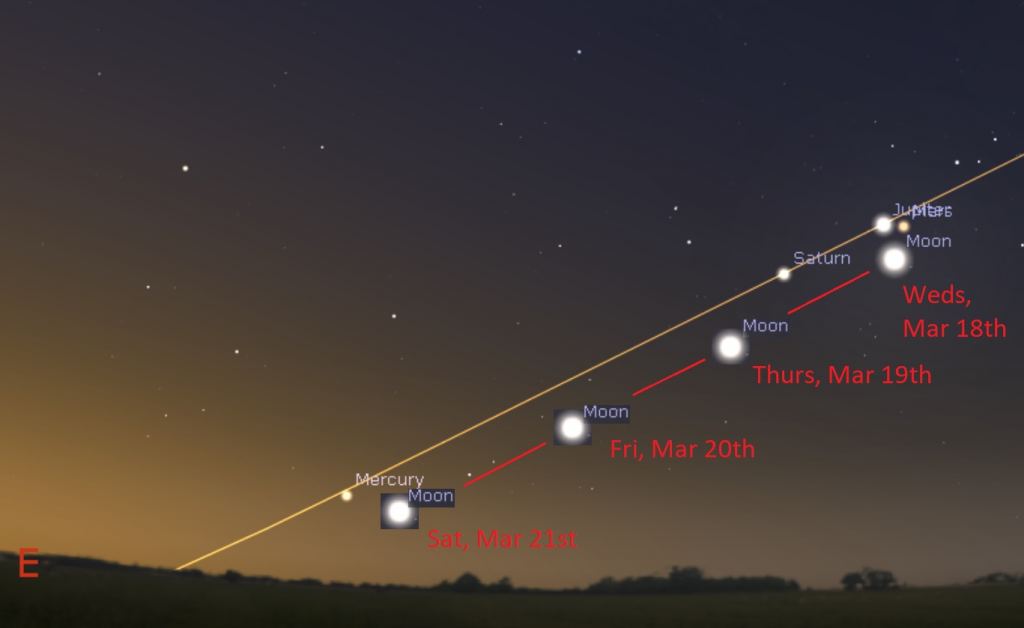
Parade of the Planets
First, the Moon greets the Red Planet Mars on Wednesday, March 18th at around ~9:00 Universal Time (UT)/5:00 AM EDT. Mars shines at magnitude +0.9, and as seen through a telescope, shows off a disk only 6” across. Mars is worth watching in 2020, as it reaches a favorable opposition on October 13th, with a disk 22” across. This also makes 2020 a ‘Mars Year,’ and three missions are planned to head to the Red Planet this summer; the United Arab Emirates’ Mars Hope orbiter, China’s Huoxing-1 rover and orbiter, and NASA’s newly christened Perseverance rover. The Moon actually occults (passes in front of) Mars for the very southern tip of South America on the morning of March 18th.
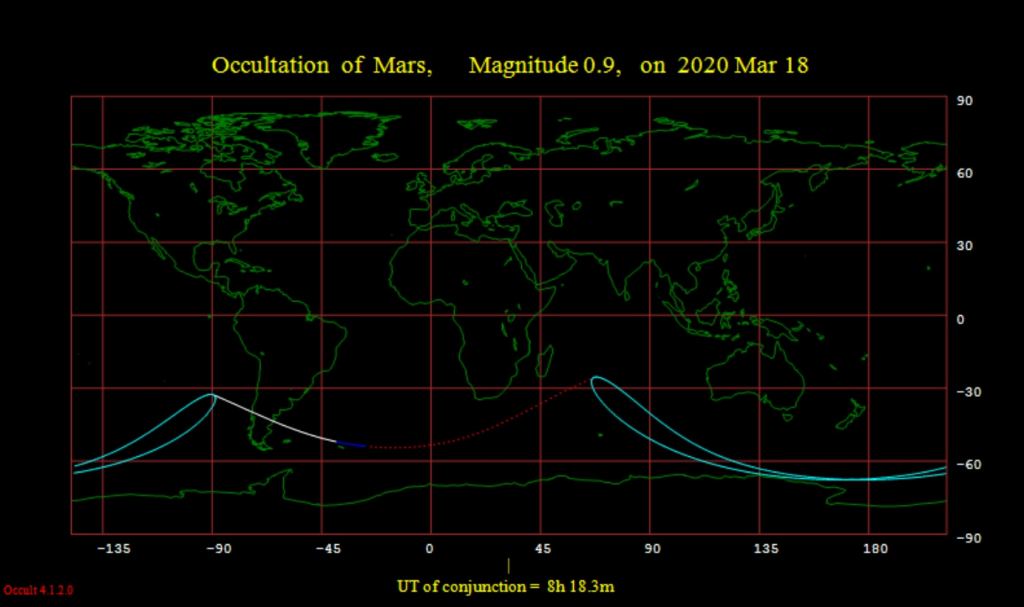
Next, the crescent Moon passes 1.5 degrees from Jupiter just two hours later. Observers watching at dawn on the morning of March 18th will see a skewed emoticon ‘smiley face’ conjunction, consisting of the Moon and the planets Jupiter and Mars shining down on the current travails of the Earth, proving that perhaps the Universe does indeed have a wry sense of humor.
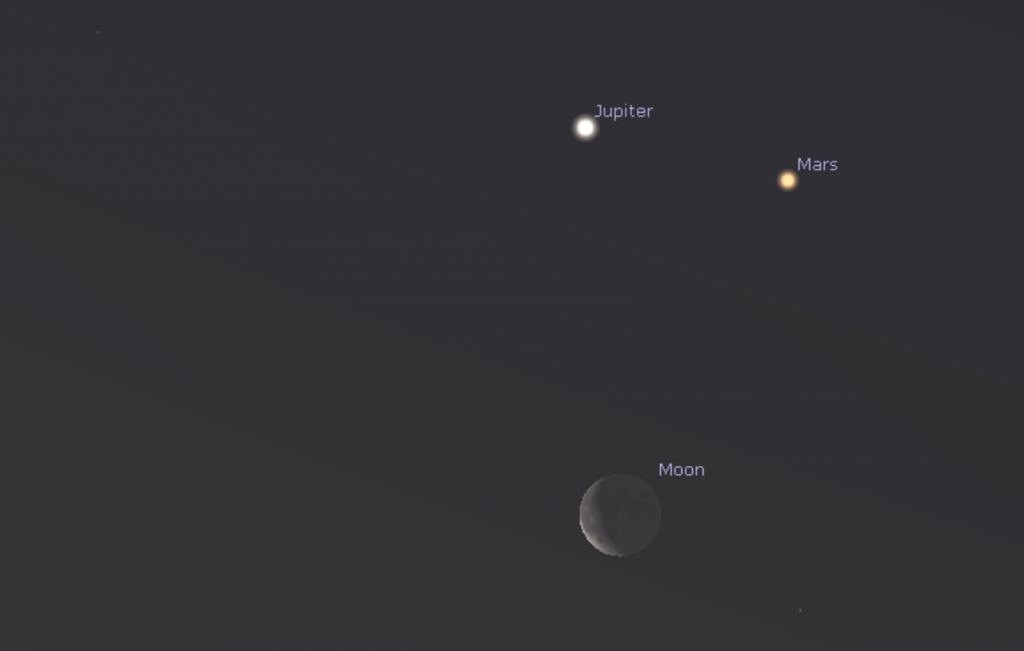
…and in 2025, you can see a true ‘double lunar occultation’ featuring Venus and Regulus… you’ll just have to journey to northern Siberia to do it:
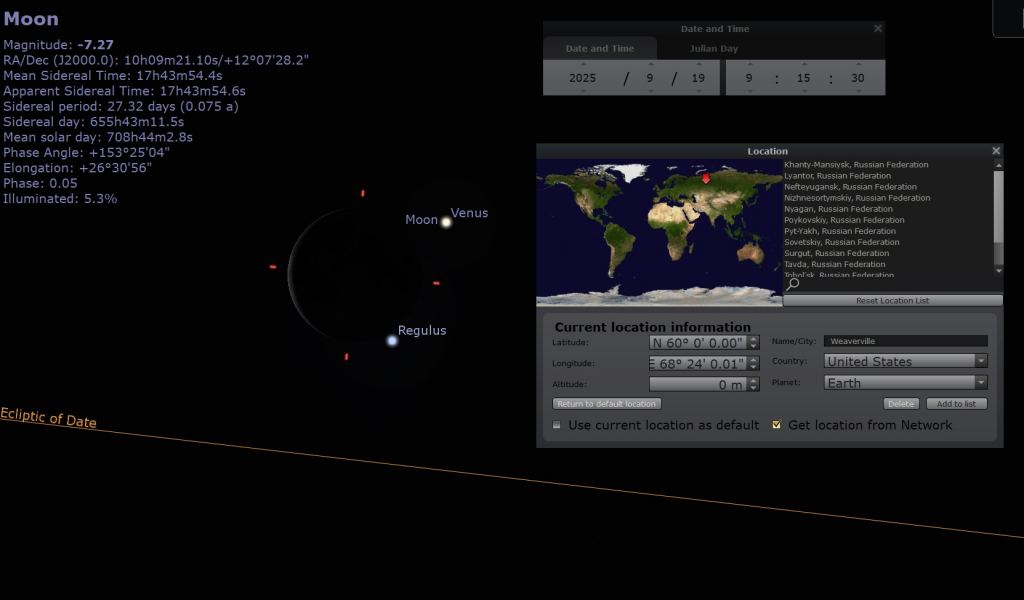
Zoom in on Jupiter at around ~18:00 UT on March 17th, and you might just spy another celestial treat, as the Galilean moons Ganymede and Io both briefly cast shadows back onto the Jovian cloud tops from 17:40 to 18:03 UT favoring viewers based along the eastern coast of Australia and New Zealand.
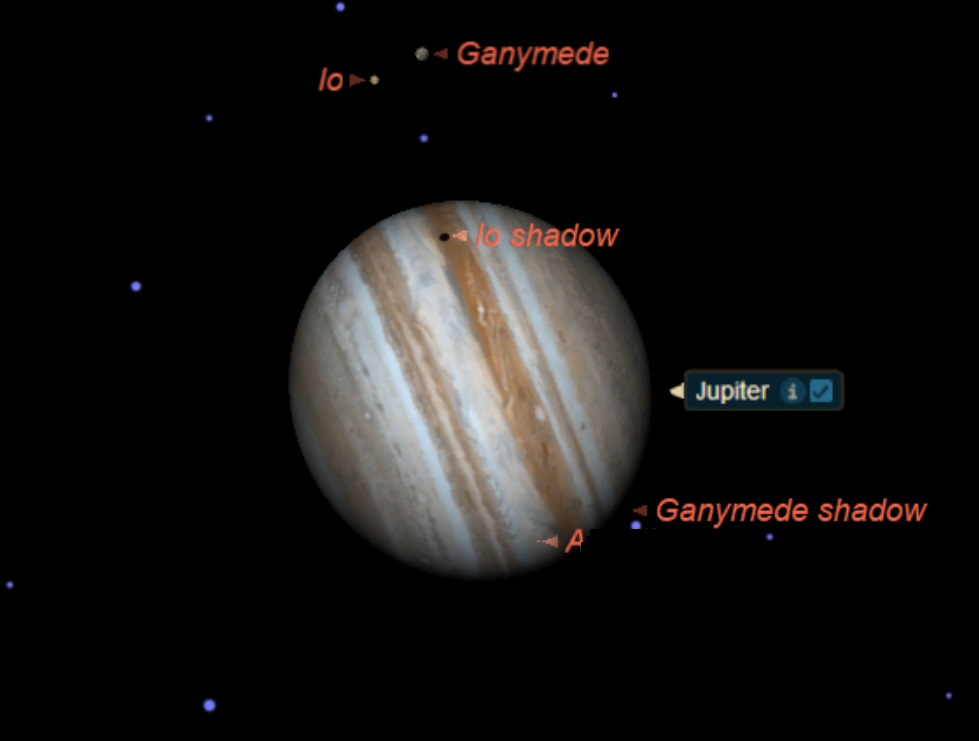
But wait, there’s more. On Thursday March 19th, the 22% illuminated Moon passes two degrees from +0.7 magnitude Saturn. Before William Herschel discovered Uranus from his backyard garden on the night of March 13th, 1781, this represented the very outskirts of the solar system.
Ready for a feat of visual athletics? Sweep around the sky near the daytime Moon with binoculars: can you see said planets? Another nifty trick is to aim a telescope at one of the dawn planets, then track it right up into the daytime sky.
Earthshine should also be easily visible on the dark nighttime limb of the Moon right around this time. You’re seeing sunlight that’s striking the waxing gibbous Earth, getting reflected back up at the Moon. Fun fact: Earthshine can vary, based on the amount of reflective cloud and snow cover currently turned Moonward.
The Vernal or northward equinox for 2020 also falls on the night of March 20th at 3:54 UT/or just before midnight on the 19th at 11:54 PM EDT. This sets us up for Easter, reckoned by the Roman Catholic Church as ‘the first Sunday after the first Full Moon after the Vernal Equinox,’ which the First Council of Nicaea fixed in 325 AD as March 21st. Fun fact: to complicate things further, the Eastern Orthodox Church still uses ye’ ole Julian Calendar, meaning that the dates for Easter are often out of sync… and 2020 is just such a year, with Easter reckoned on the modern western Gregorian calendar falling on April 12th, versus Eastern Orthodox Easter on March 19th.
The Full Paschal Moon (falling this year on April 8th) also always coincides with Jewish Passover. The Jewish calendar is a luni-solar hybrid similar to the Chinese calendar, meaning that it must add an extra (embolismic) month every 2-3 years to stay in sync. The Muslim calendar is strictly lunar, based on the sighting of the waxing crescent Moon, while the Gregorian calendar is exclusively based on the mean tropical solar year.
Finally, up for a challenge or two? On the morning of Saturday, March 21st, the 8% illuminated crescent Moon sits just three degrees from +0.2 magnitude Mercury. Mercury is headed towards greatest elongation on March 24th, and this weekend marks a great chance to spy the elusive innermost planet, using the nearby crescent Moon as a guide.
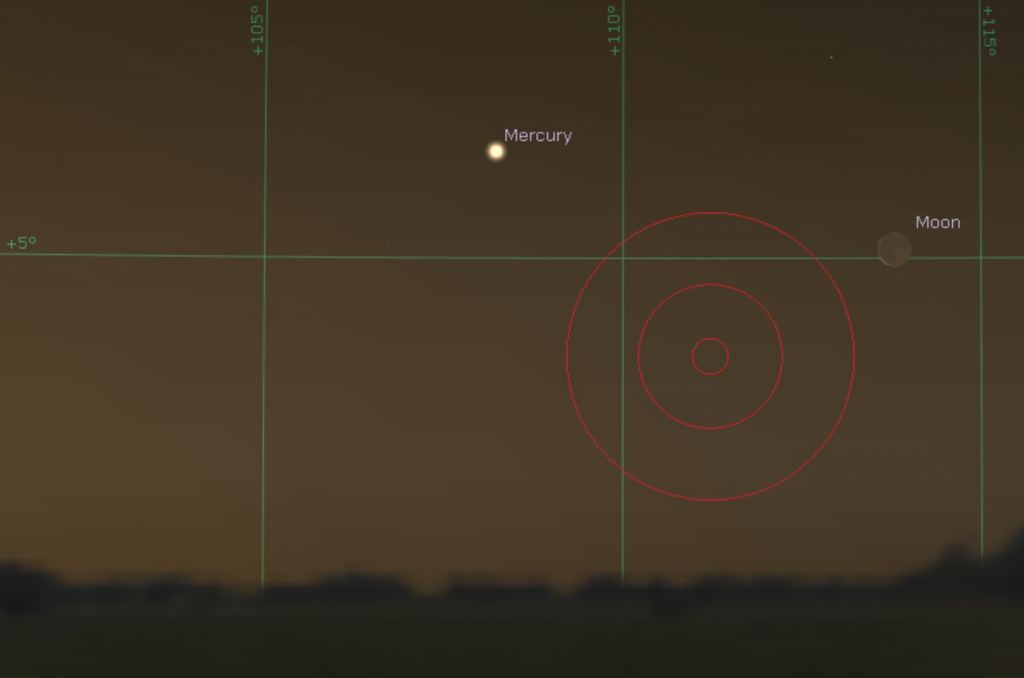
From there, the Moon reaches New on March 24th at 9:30 UT/5:30 AM EDT. After that, the hunt is on to recover the waxing crescent Moon at dusk. The U.S. East Coast has just such an opportunity on the evening of March 25th, when the Moon is just 38 hours old at sunset.
With things looking down on Earth, it’s never been a better time to look up.
Currently under quarantine? Universe Today’s Nancy Atkinson has a great list of astronomy-themed activities that you can participate in.

